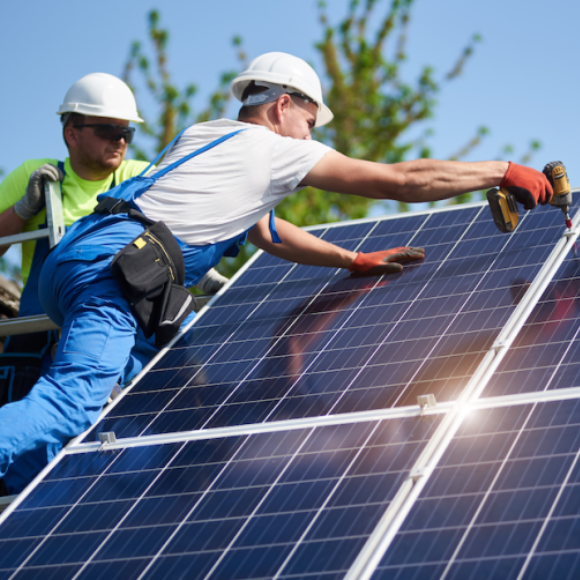
Are you considering installing a solar system but are still weighing up the benefits and drawbacks?
Finn Peacock, a Chartered Electrical Engineer who worked with CSIRO and founded advisory website SolarQuotes in 2009, has researched the seven most common mistakes that keep homeowners from benefiting from the hot Australian sun.
Here is what he found.
Mistake #1 Waiting for batteries to drop in price
Peacock says waiting two, three or four years for batteries to become affordable means another two, three or four years of high bills. One day, batteries will make lots of sense – and when that day comes they can easily be added to any existing solar system using a method called AC coupling.
Mistake #2: Not getting multiple quotes
Having several different companies give you a breakdown on the cost of a system will give you a better understanding of whether solar is right for your budget, and whether or not you’re potentially being ripped off (in either price or quality).
Mistake #3: Not understanding the difference between the solar rebate and solar feed-in tariffs
People get these mixed up all the time, Peacock says.
The ‘solar rebate’ acts like a point-of-sale discount off the cost of a solar system, and is claimed on your behalf by your solar installer.
The ‘feed in tariff’ is what your electricity retailer pays you, per kWh, for feeding excess solar into the grid. Again, he advises that it pays to shop around, as retailers can pay anywhere from 0-12c per kWh.
“If you see prices quoted online, on the telly, or in the paper, there’s a 99.99% chance that the quote price already has the ‘discount’ from the solar rebate applied”, he warns.
“It’s worth about $450 per kW of solar panels installed, but this will vary depending on where you live.
“As an example, a 6.6kW system attracts around $3,000 in rebates.
“Anyone can claim the rebate, even if you’ve already bought solar power systems in the past and want to buy a new system.”
Mistake #4: Not knowing the consumer protections you’re entitled to
As with any major appliance purchase, you might find yourself being warned to pay for extra insurance such as a ‘maintenance fee’ or a 25-year performance warranty, but Peacock suggests that a lot of these are just ‘shonky’.
In reality, he says, there are actually four separate warranties that you get with your solar system – the ‘performance warranty’ being one of them. The other three cover the inverter, the panels, and the workmanship, for which you need 10-year, 12-year and 5-year warranties, respectively.
Mistake #5: Not asking the hard-hitting questions
The only thing shonky installers hate more than an ACCC investigation is a customer who knows their stuff, Peacock says.
“With knowledge comes power, and if a shonky installer realises that you know solar, their ability to rip you off just took a nose dive and they know it.
Always independently verify information, whenever possible. There are numerous resources available to help you verify what solar salesmen tell you – such as Whirlpool forums and even the Solarquotes website.
Mistake #6: Not buying enough panels
Prices for solar installation have fallen considerably, Peacock says, and so the only limitations now are your budget, what your roof can properly fit, and the amount your DNSP (Distributed Network Service Provider) allows you to install.
For most homes, the sweet spot is 6.6kW of panels (approx. 18 in total) with a 5kW inverter.
“The biggest regret I’ve heard from solar power owners is they didn’t factor in how winter limits the electricity bill savings from their system. They wish they installed more panels when they had the chance, as it’s expensive and complicated to add panels later to an existing system”, he adds.
Mistake #7: Thinking that because your roof isn’t north-facing, solar isn’t worth it
This couldn’t be further from the truth, Peacock says.
“Solar panel efficiencies have reached the point where, even if your panels aren’t facing north, you only lose 10-15% of your solar system production – which means that the system is still well worth the investment.
“In fact, depending on the time of day you use your electricity, it may make more sense for your solar panels to face east or west (for morning or evening heavy electricity usage habits, respectively)”, he concludes.

